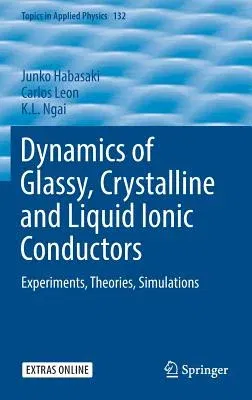This book discusses the physics of the dynamics of ions in various
ionically conducting materials, and applications including electrical
energy generation and storage. The experimental techniques for
measurements and characterization, molecular dynamics simulations, the
theories of ion dynamics, and applications are all addressed by the
authors, who are experts in their fields. The experimental techniques of
measurement and characterization of dynamics of ions in glassy,
crystalline, and liquid ionic conductors are introduced with the dual
purpose of introducing the reader to the experimental activities of the
field, and preparing the reader to understand the physical quantities
derived from experiments. These experimental techniques include
calorimetry, conductivity relaxation, nuclear magnetic resonance, light
scattering, neutron scattering, and others. Methods of molecular
dynamics simulations are introduced to teach the reader to utilize the
technique for practical applications to specific problems. The results
elucidate the dynamics of ions on some issues that are not accessible by
experiments. The properties of ion dynamics in glassy, crystalline and
liquid ionic conductors brought forth by experiments and simulations are
shown to be universal, i.e. independent of physical and chemical
structure of the ionic conductor as long as ion-ion interaction is the
dominant factor. Moreover these universal properties of ion dynamics are
shown to be isomorphic to other complex interacting systems including
the large class of glass-forming materials with or without ionic
conductivity.By covering the basic concepts, theories/models,
experimental techniques and data, molecular dynamics simulations, and
relating them together, Dynamics of Glassy, Crystalline and Liquid
Ionic Conductors will be of great interest to many in basic and applied
research areas from the broad and diverse communities of condensed
matter physicists, chemists, materials scientists and engineers. The
book also provides the fundamentals for an introduction to the field and
it is written in such a way that can be used for teaching courses either
at the undergraduate or graduate level in academic institutions.

